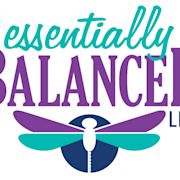Search results
Myofascial Release has exploded on the therapeutic scene with an unprecedented impact and is recognized as the most effective form of healthcare therapy. Myofascial Release is a type of treatment used to tread chronic pain from the following: back, neck, menstrual, jaw, headaches, jaw, and others.
- Seminars
John F. Barnes’ Myofascial Release® is considered to be the...
- About Myofascial Release
The John F. Barnes’ Myofascial Release Approach® is...
- Patient Treatment
The Myofascial Release Treatment Centers are dedicated to...
- Resources
The Fascial Voice keeps you informed on all current events...
- Fascial Voice
Myofascial Release is a type of treatment used to tread...
- Log Into Myofascial Release
To retrieve your password, please enter the e-mail address...
- Seminars
- Overview
- How Does Myofascial Release Work?
- Who Might Benefit From Myofascial Release?
- What Are the Risks of Myofascial Release?
- Does Science Support Myofascial Release?
- Consult a Massage Therapist and Your Doctor
Myofascial release is a type of physical therapy often used to treat myofascial pain syndrome, a chronic pain disorder caused by sensitivity and tightness in your myofascial tissues.
Myofascial tissues surround and support the muscles throughout your body. The pain usually originates from specific points within your myofascial tissues called “trigger points.”
Most myofascial release treatments take place during a massage therapy session. Some chiropractors and traditional medical practitioners may also offer it.
Your therapist will gently massage the myofascia and feel for stiff or tightened areas. Normal myofascia should feel pliable and elastic. The therapist will begin massaging and stretching the areas that feel rigid with light manual pressure. The therapist then aids the tissue and supportive sheath in releasing pressure and tightness. The process is repeated multiple times on the same trigger point and on other trigger points until the therapist feels the tension is fully released.
Discover the American Chronic Pain Association’s 10-step program for coping with chronic pain »
These areas where the massage therapist is working may not be near where the pain originates or where you feel the pain most prominently. Myofascial release works the broader network of muscles that might be causing your pain. It tries to reduce tension throughout your body by releasing trigger points across a broad section of your muscular system.
Patients with myofascial pain syndrome frequently benefit from this type of therapy. People who experience chronic headaches may also find relief from myofascial release. Gently massaging on tightened muscles in and around the neck and head may reduce headaches.
Some people with venous insufficiency, which occurs when blood pools in the deep veins of the leg, may also be candidates for myofascial release. During venous insufficiency, the blood pool stretches and eventually damages the veins in your legs. You may experience an aching and painful sensation in the affected leg. Myofascial release might be used in conjunction with other treatments to reduce the pooling and pain caused by venous insufficiency.
Myofascial release by massage therapy has very few risks. Whether you’re trying to relax or aiming to ease back pain, massage therapy may be beneficial for pain reduction.
However, massage isn’t ideal for people:
•with burns, injuries, or painful wounds
•with fractures or broken bones
•with fragile or weak bones
•with deep vein thrombosis or deep vein issues
Most studies look at massage and chiropractic manipulation. However, there are few studies that look at myofascial release specifically. This is because therapy styles differ from practitioner to practitioner. This means broad medical support is difficult to come by. Doctors may be more apt to recommend more traditional treatments.
Still, because of the relative lack of risk, many patients with chronic or even short-term back pain may be interested in trying it to see if the therapy provides any relief. This is especially true if you’re trying to avoid surgery.
Speak with your doctor or physical therapist if you’re interested in trying myofascial release. You may have great success with this type of alternative back pain treatment. However, you need to be aware of the risks and potential dangers as you would with any type of medical treatment.
What is myofascial release? Myofascial release (not myofacial release) is a hands-on approach to managing pain and discomfort. Now, don’t expect a gentle massage with aromatherapy and pan flute music. Instead, myofascial release can be an intense experience.
Apr 13, 2023 · Answer From Brent A. Bauer, M.D. Myofascial (my-o-FASH-e-ul) release is a therapy technique often used in massage. This therapy is focused on pain that comes from myofascial tissues — the tough coverings that wrap, connect and support muscles. Myofascial pain may differ from other types of pain because it often originates in "trigger points."
Sep 23, 2021 · Myofascial release therapy can help relieve tightness and stiffness in your body. Learn about what myofascial tissue is and how this massage technique works.
People also ask
What is myofascial release?
Does myofascial release help with back pain?
Should I get Myofascial Release Therapy?
What is myo & fascial Release Therapy?
Aug 15, 2022 · Myofascial release therapy is a type of gentle, constant massage that releases tightness and pain throughout your myofascial tissues. First, your healthcare provider will locate trigger points, or knots, in your fascial tissues. Then, they’ll gently apply pressure until they feel the tension release.
Feb 12, 2019 · February 12, 2019. Aiyana Fraley. Massage Techniques. Myofascial release involves slow, sustained pressure applied by the hands to areas where fascial tissue restricts mobility and may cause pain. The movement stretches the skin and fascia underneath, freeing up fluid within layers of tissue.






